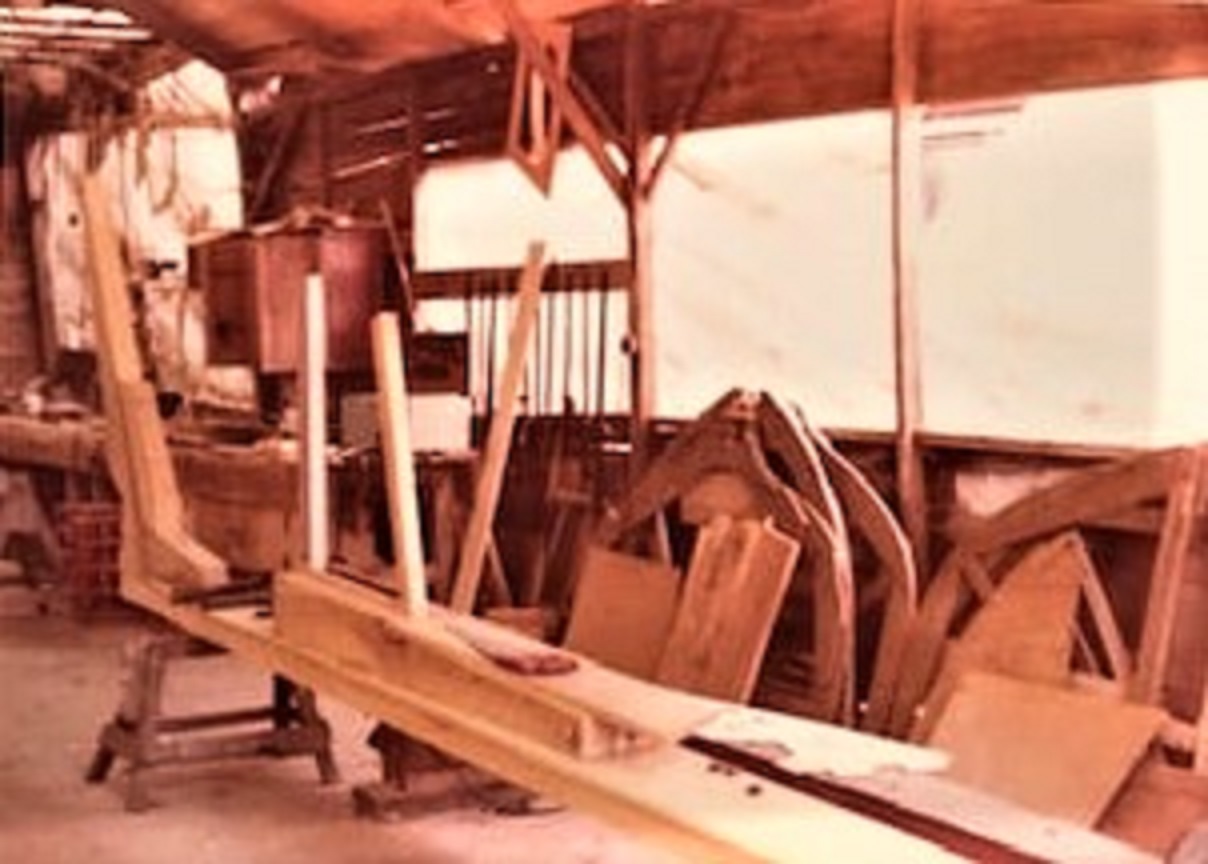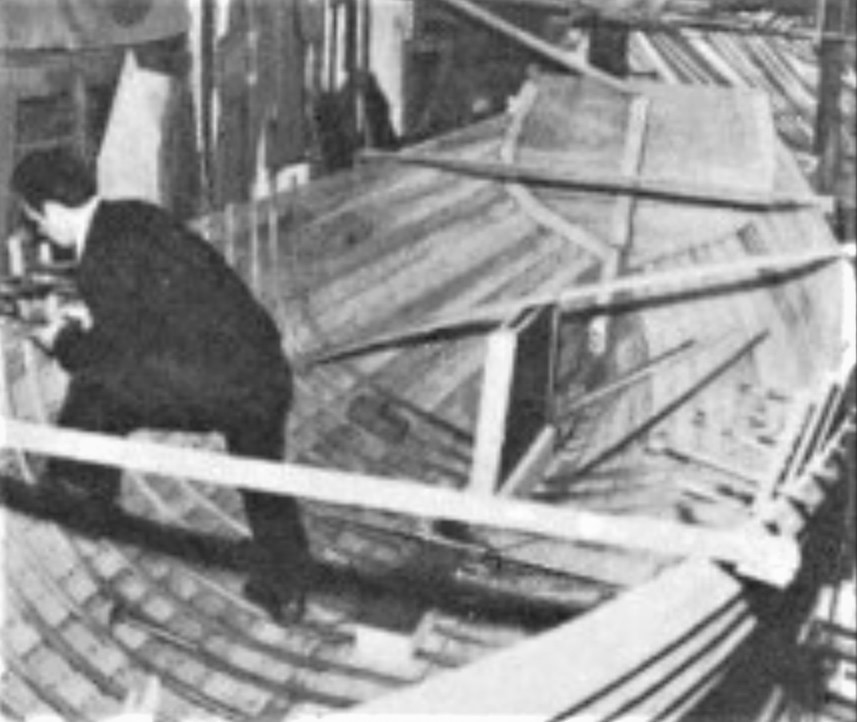Finesse 24 Quo Vardis, sail number 33 (now renamed Blue Bonnet), was photographed at an early stage during her construction in the late 1970s. In this first picture the keel timber is supported by trestles. Below this picture is the same image, enhanced and with some annotations.

The keel timber with the stern-post and stem assemblies. (Photo: Nick Ardley)

The ballast keel and the timbers fore and aft of it (the skeg and the forefoot) are sketched in their future positions. Also sketched in are the centre-plate case sides. The trunk and part of the case are below the water surface when afloat and must therefore be treated as components of the hull.
The inner sternpost is locked to the deadwood with a mortice and tenon joint and bolted to the main sternpost; there is no knee. The top of the centre plate trunk slopes forward on the keel. Since this surface is more-or-less horizontal when afloat, it is clear that the Finesse is trimmed aft-down when afloat. (An approximate water-line is shown.)
The sides of the trunk are bolted together with athwartships bolts that pass through the slot space. The centre-plate case sides will be set on the aft surface of the trunk, attached to the posts (‘headledges’) that are already in position, probably located by athwartships bolts passing through their lower ends.

Another view of the keel (the lighter material in the foreground). A short plank- possibly the slot capping- is lying on top of the trunk under a handsaw. Hull moulds are leaning against the wall. (Photo: Nick Ardley)
The deadwood and inner sternpost are set in from the main sternpost to receive the hood ends of the garboards and lower planks. Above these, planks are continued to the stern and attached to the transom using fashion pieces (shaped timbers like hindmost frames) which are visible in the picture below.

The clinker hull planking was constructed around temporary moulds. The steam-bent frames were added afterwards. The centre-plate case and the slot capping are in place, so the ballast keel must already be attached by this stage.

When Blue Bonnet’s keel bolts were recently renewed it was found necessary to remove the ballast keel. The skeg timbers seen here are attached to the keel timber (which runs the length of the boat) and are notched to match the aft end of the ballast keel.

The forefoot timber gives a smooth profile to the front of the ballast keel.

Her original ballast keel. The aft end is nearest the camera; the upper surface is on the right. The two bolt holes at the aft end are the pair that sit under the inboard engine.


